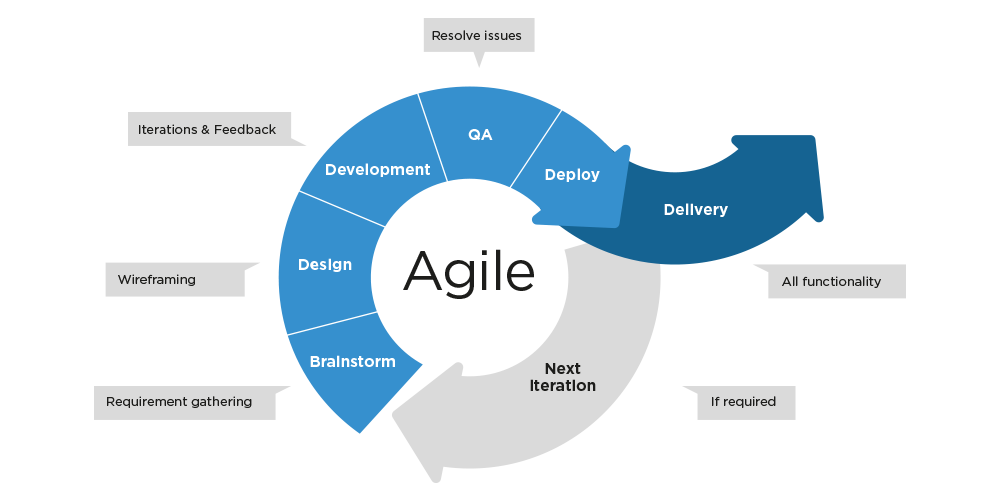Methodology
In our software development process, we follow an agile methodology, which allows us to be flexible and adaptive to changing requirements. We work in iterative sprints, typically lasting 1-2 weeks, where we focus on delivering small, incremental improvements to the software.
Our process begins with a planning phase where we define the goals and scope of the sprint. We then move into the development phase, where our team of developers and designers work together to implement the planned features. Throughout the sprint, we conduct regular meetings to discuss progress, address any issues, and make adjustments to the plan as needed.
At the end of each sprint, we conduct a review to demonstrate the completed work to stakeholders and gather feedback. This feedback is used to inform the next sprint, ensuring that we are continuously improving and delivering value to our customers.
Overall, our agile software development process allows us to be responsive to our customers’ needs, deliver high-quality software, and adapt to changing requirements quickly.

Agile software development is an iterative and incremental approach to software development that emphasizes flexibility, collaboration, and customer feedback. While specific practices and terminology may vary, the following are common phases in agile software development:
Product Vision
This initial phase involves defining the overall vision and goals for the product. This includes identifying the target audience, understanding their needs, and defining the key features and functionalities of the product.
Product Backlog
The product backlog is a prioritized list of features, enhancements, and fixes that need to be implemented in the product. This list is dynamic and can change based on feedback and new requirements.
Sprint Planning
Agile development is organized into a series of fixed-length iterations called sprints, typically lasting 1-4 weeks. Sprint planning involves selecting a set of items from the product backlog to be completed during the sprint.
Sprint Execution
During the sprint, the development team works on implementing the selected items from the product backlog. Daily stand-up meetings are held to discuss progress, challenges, and any adjustments needed to the sprint plan.
Daily Stand-ups
Daily stand-up meetings, also known as daily scrums, are brief meetings where team members discuss their progress, what they plan to work on next, and any obstacles they are facing. These meetings help keep the team aligned and focused on the sprint goals.
Sprint Review
At the end of each sprint, a sprint review meeting is held to demonstrate the completed work to stakeholders and gather feedback. This feedback is used to inform the next sprint planning session.
Sprint Retrospective
Also at the end of each sprint, a sprint retrospective meeting is held to reflect on what went well, what could be improved, and any changes that should be made to the team’s processes. This continuous improvement process helps the team become more effective over time.
Release
After several sprints, a release may be planned to deliver a set of features to customers. Releases are typically done frequently to provide value to customers early and often.
Iterative Improvement
Agile development is iterative, meaning that the team continuously revisits and refines the product based on feedback and changing requirements. This iterative approach allows for flexibility and ensures that the product meets the needs of the customer.
These phases are repeated for each sprint, with the product evolving and improving with each iteration. Agile development allows teams to respond quickly to changing requirements and deliver high-quality software that meets the needs of the customer.

